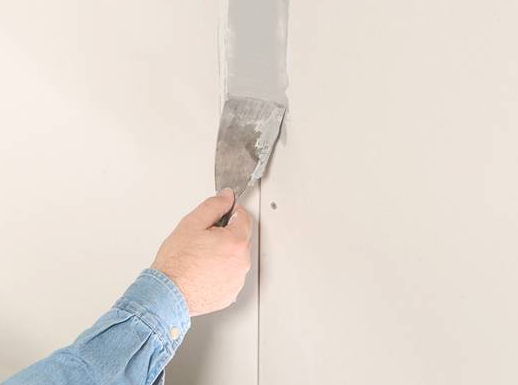Hydroxypropyl Methylcellulose (HPMC) is a versatile additive widely used in the construction industry, particularly in the formulation of water-resistant putty powder. HPMC enhances various properties of putty powder, making it an essential component for achieving high-performance and durable wall finishes. This article explores the use of HPMC in water-resistant putty powder, detailing its benefits and the key factors to consider in its application.
Introduction to Hydroxypropyl Methylcellulose (HPMC)
Hydroxypropyl Methylcellulose (HPMC) is a non-ionic, water-soluble cellulose ether derived from natural cellulose. It is produced by chemically modifying cellulose with methyl and hydroxypropyl groups, which enhance its solubility, water retention, and film-forming properties. These characteristics make HPMC a valuable additive in various construction materials, including putty powder.
Benefits of HPMC in Water-Resistant Putty Powder
- Enhanced Water Retention
- Improved Workability: HPMC significantly improves the water retention capacity of putty powder, ensuring that the mixture remains workable for a longer period. This allows for smoother application and better finish.
- Proper Hydration: Enhanced water retention ensures proper hydration of the cement and other binders in the putty powder, leading to optimal curing and increased strength.
- Improved Adhesion
- Surface Bonding: HPMC enhances the adhesion properties of putty powder, allowing it to bond effectively to various substrates, including concrete, plaster, and gypsum board. This is crucial for achieving a durable and long-lasting finish.
- Durability: Better adhesion properties reduce the risk of delamination and cracking, ensuring the longevity of the applied putty.
- Increased Flexibility and Crack Resistance
- Flexibility: The addition of HPMC imparts flexibility to the putty powder, allowing it to accommodate minor movements and thermal expansion without cracking.
- Crack Resistance: Enhanced flexibility helps in preventing cracks and fractures, maintaining the aesthetic and functional integrity of the wall surface.
- Ease of Application
- Smooth Application: HPMC improves the consistency and rheological properties of putty powder, making it easier to mix, spread, and level. This results in a smooth and uniform finish, reducing the need for additional sanding or smoothing.
- Sag Resistance: The thickening effect of HPMC provides excellent sag resistance, ensuring that the putty remains in place on vertical surfaces without slipping.
- Enhanced Water Resistance
- Water Repellency: HPMC enhances the water-resistant properties of putty powder, providing a protective barrier against moisture ingress. This is particularly important in humid environments or areas prone to water exposure, such as bathrooms and kitchens.
- Longevity: Improved water resistance extends the lifespan of the putty, preventing issues such as efflorescence, mold growth, and degradation due to moisture.
Factors to Consider When Using HPMC in Putty Powder
- Viscosity
- Selection: Choose the appropriate viscosity grade of HPMC based on the desired consistency and application requirements of the putty powder. Higher viscosity grades provide better water retention and sag resistance, while lower viscosity grades offer smoother application.
- Stability: Ensure that the selected HPMC grade maintains stable viscosity over time, preventing variations in the performance of the putty powder.
- Substitution Level (Methoxy and Hydroxypropyl Content)
- Methoxy Content: Influences the solubility and gelation temperature of HPMC. Higher methoxy content generally increases water resistance and decreases gelation temperature.
- Hydroxypropyl Content: Enhances water solubility and thermal stability. The balance between methoxy and hydroxypropyl content determines the overall performance of HPMC in the putty powder.
- Compatibility with Other Ingredients
- Formulation: Ensure that the selected HPMC grade is compatible with other components in the putty powder formulation, such as binders, fillers, and additives. Incompatible interactions can affect the stability and performance of the putty.
- Environmental Conditions
- Application Environment: Consider the environmental conditions, such as temperature and humidity, during the application of putty powder. High-quality HPMC ensures consistent performance under varying conditions.
Conclusion
Hydroxypropyl Methylcellulose (HPMC) plays a vital role in enhancing the properties of water-resistant putty powder. By improving water retention, adhesion, flexibility, ease of application, and water resistance, HPMC ensures that the putty powder delivers high-performance and durable wall finishes. When selecting HPMC for putty powder formulations, it is essential to consider factors such as viscosity, substitution level, compatibility, and environmental conditions to achieve optimal results. As the construction industry continues to demand high-quality and efficient materials, the use of HPMC in water-resistant putty powder remains indispensable.


